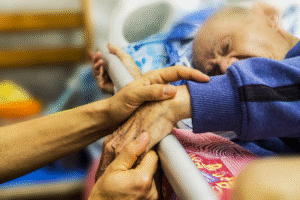
While many adults struggle to adapt their diets and lifestyles to try to reduce blood pressure, it is easy to overlook the dangers that can sometimes accompany lower-than-normal blood pressure.
Regardless of your age or health, monitoring blood pressure is a preventative measure that should be performed frequently. These readings give insight into the heart’s ability to move blood throughout the body. Lower-than-normal readings can be detrimental to your health. They can deprive the brain and other organs of the oxygen and nutrients delivered in the blood. Keep in mind that a single lower-than-normal reading does not indicate there is a serious complication if there are no additional symptoms.
If you monitor your blood pressure at home on your own, it is important to know how to interpret the numbers that make up your reading:
- Systolic pressure is the top number in a typical blood pressure reading. It measures the amount of pressure within the heart as it pumps blood out through the arteries to the rest of the body.
- Diastolic pressure is the bottom number in a typical blood pressure reading. It measures the amount of pressure within the arteries when the heart rests between beats.
The American Heart Association suggests more attention is usually given to the top (systolic) number as it can be an early indicator of heart disease for those over the age of 50. However, most people experience a rise in systolic blood pressure as they age. This can be due to the increasing stiffness of large arteries, long-term build-up of plaque, and increased incidence of cardiac and vascular disease.
The optimal blood pressure for adults is less than 120/80 (systolic/diastolic). In healthy people, low blood pressure without any symptoms is not usually a concern. It can, however, signal the possibility of an underlying problem, especially for the elderly. In general, seek medical attention if you are experiencing lower than normal blood pressure along with any of the following symptoms:
- Fatigue
- Depression
- Fainting
- Dizziness or lightheadedness
- Dehydration or Unusual thirst
- Lack of concentration
- Blurred Vision
- Nausea
- Cold, clammy, pale skin
- Rapid, shallow breathing
Severely low blood pressure readings may be caused by underlying heart, endocrine, or neurological disorders. Always check with your doctor to make sure your medication is not the cause of any new or unexpected symptoms. As we age, it is important to become aware of the effects of changes in blood pressure along with how to safely monitor them.
Article Sources:
- Low Blood Pressure – American Heart Association
- Understanding Blood Pressure Readings – American Heart Association
- Understanding Low Blood Pressure – WebMD
- Low Blood Pressure – Mayo Clinic
A Place at Home specializes in providing Compassionate Care delivered by Passionate Professionals. Our skilled caregivers advocate for the health and wellness of those who want to remain in the comfort of their own homes.




